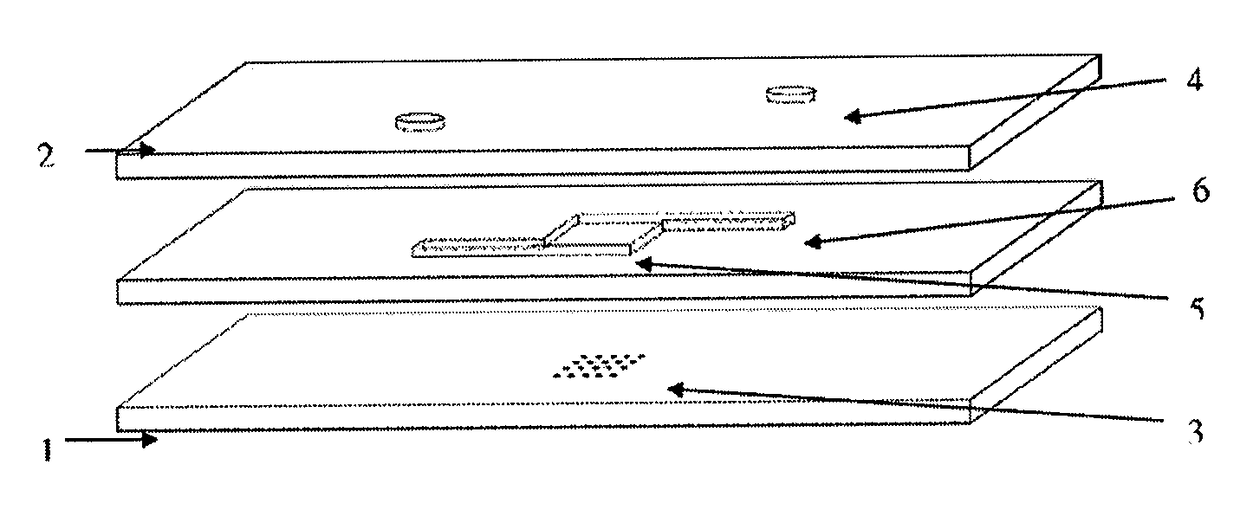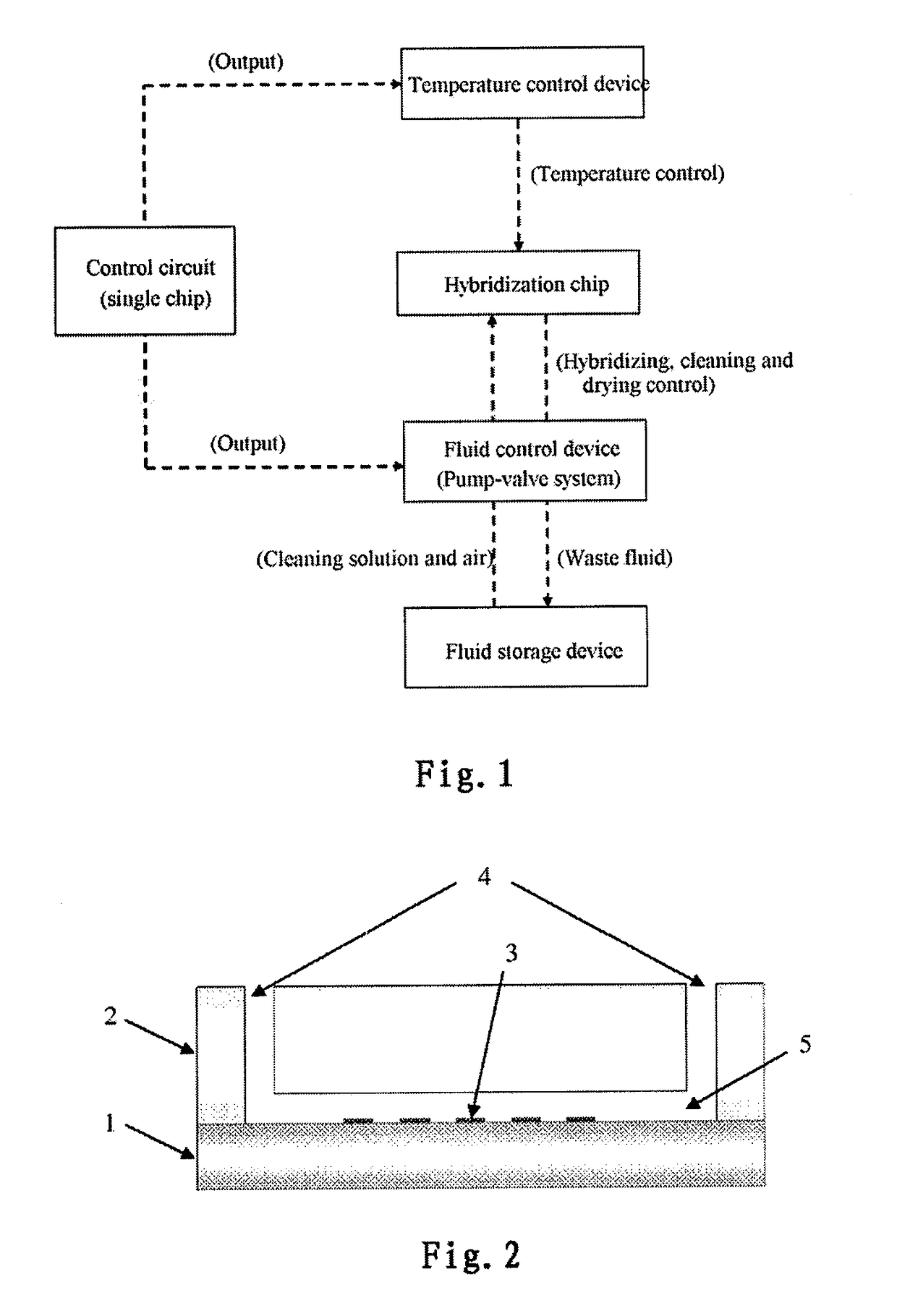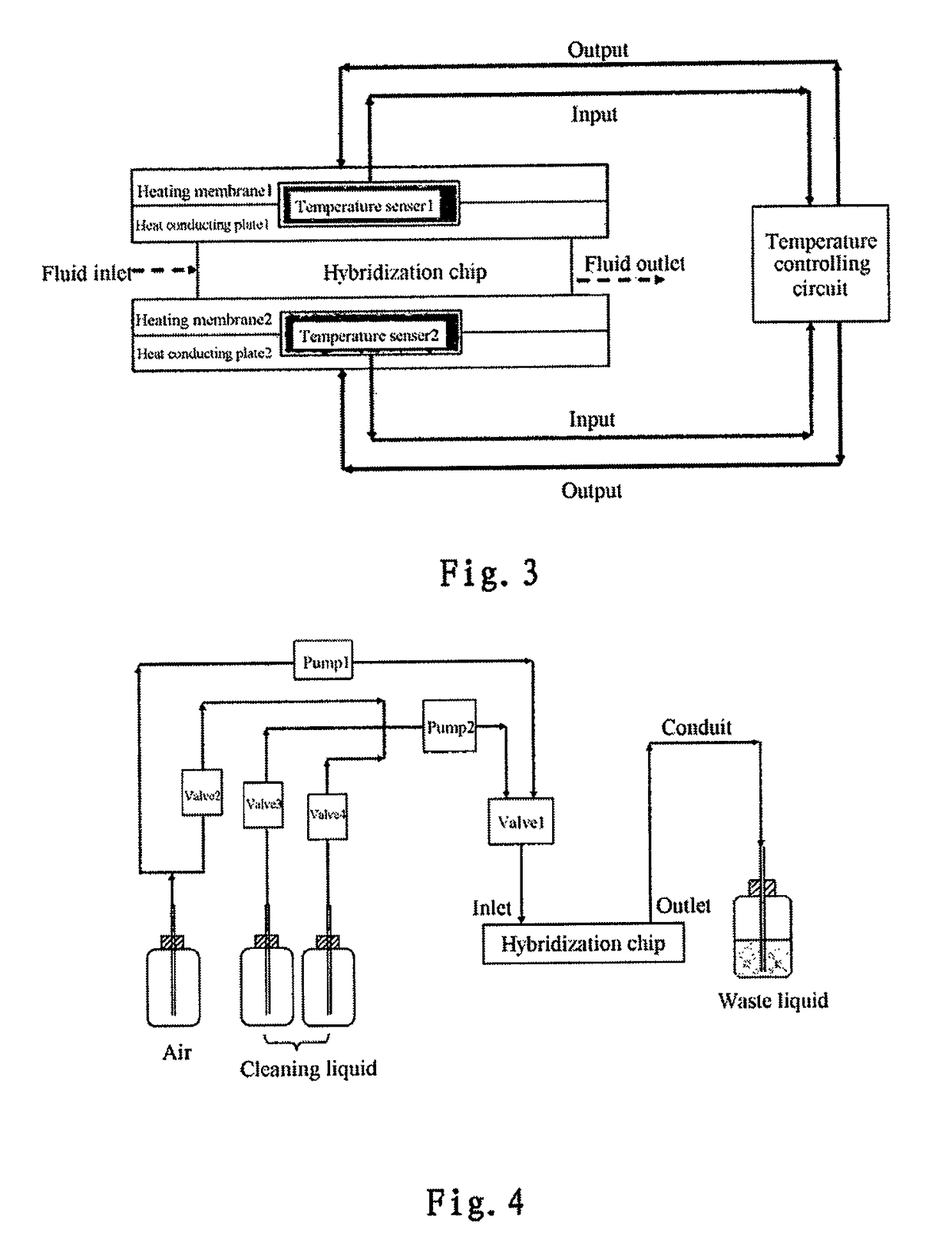Biological chip hybridization system
a biochemical chip and hybridization technology, applied in biochemical apparatus and processes, laboratories, instruments, etc., can solve the problems of low hybridization efficiency, easy result of interior contamination of pumps, and homogenous hybridization over the whole, so as to improve or reduce the pressure in the air channel, accurately control the flow rate of liquid, and increase or reduce the effect of pressur
- Summary
- Abstract
- Description
- Claims
- Application Information
AI Technical Summary
Benefits of technology
Problems solved by technology
Method used
Image
Examples
example 1
[0047]A biological chip hybridization system for single sample hybridization is provided in this example, consisting of: a bio-chip, two fluid channels respectively connected to both through holes on the bio-chip, the fluid control device connected to the fluid channel, control circuit, temperature control device and fluid storage device. Wherein, instruction is given by the control circuit to the temperature control device, so that the temperature of the chip and the sample solution can be automatically controlled; instruction is also given by the control circuit to the fluid control device, so as to automatically control the fluid in the chip hybridization, cleaning and drying process. Driven by the pump valve device, the cleaning liquid and air are added from the fluid storage device to the hybridization chamber through the fluid channel, and then discharged to the waste storage device through the fluid channel. A schematic diagram of the biological chip hybridization system acco...
example 2
[0051]A biological chip hybridization system for single sample is provided in this example. As different from Example 1, the bio-chip is a reciprocating flow based bio-chip, with its structure shown in FIG. 5, wherein 1 is the substrate; 2 is the cover plate; 3 is the bio-probe array; 4 is the through hole; 5 is the hybridization chamber; 6 is the microfluidic channel; and 7 is the microfluidic layer.
[0052]The bio-chip is formed by three layers including the cover plate, the microfluidic layer and the substrate through sealing. The cover plate 2 is hydrophilic with two through holes 4 disposed for the entrance and exit of the solution. After chemical modification, the lower surface of cover plate 2, i.e., the interface to the microfluidic layer, has a static contact angle of 15 degrees to water, while the upper surface, after hydrophobic treatment, has a static contact angle of 100 degrees to water; the thickness of the microfluidic layer 7 is about 0.2 mm, on which the hollow-out h...
example 3
[0053]The operational procedures for the biological chip hybridization system described in Example 1 or Example 2 are as follows:
[0054]After the sample solution is loaded at the through hole on the bio-chip, two fluid channels are respectively connected to two through holes on the bio-chip. The temperature of the hot plate is adjusted to 60° C. Subsequently, the hybridization step is started with pump 1 open, and then the flow path where pump 1 is located is opened by the three-way valve 1 so that the sample solution is driven to move back and forth inside the chamber of the hybridization chip to allow for dynamic hybridization; after the completion of the hybridization, pump 1 and valve 1 are closed and the chip temperature is adjusted to 42° C. Subsequently, the cleaning step is started with both pump 2 and valve 3 open, so that the first cleaning liquid is driven into the chip for cleaning. After that, valve 3 is closed while valve 4 is open, so that the second cleaning liquid is...
PUM
| Property | Measurement | Unit |
|---|---|---|
| contact angle | aaaaa | aaaaa |
| contact angle | aaaaa | aaaaa |
| length | aaaaa | aaaaa |
Abstract
Description
Claims
Application Information
 Login to View More
Login to View More - R&D
- Intellectual Property
- Life Sciences
- Materials
- Tech Scout
- Unparalleled Data Quality
- Higher Quality Content
- 60% Fewer Hallucinations
Browse by: Latest US Patents, China's latest patents, Technical Efficacy Thesaurus, Application Domain, Technology Topic, Popular Technical Reports.
© 2025 PatSnap. All rights reserved.Legal|Privacy policy|Modern Slavery Act Transparency Statement|Sitemap|About US| Contact US: help@patsnap.com



